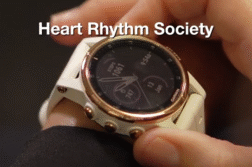CLEVELAND, OH (Ivanhoe Newswire) – More than six and a half million Americans are living with heart failure. In the next five years, that number will grow to eight and a half million people. It’s the leading cause of death for men and women. It’s a debilitating disease leaving patients breathless, fatigued, confused and in pain. Current therapies, devices and medications can be lifesaving, they do not improve the symptoms of heart failure — but now, for the first time, new technology will help.
“I’ve been riding motorcycles since I was seven,” says Jim Balala, who was riding his Harley when his journey took a sharp turn. They rushed to the hospital …
“They told me at that time that he probably was having a heart attack for about 13 hours,” says Kathy Balala, Jim’s wife.
After surgery, Jim was put into an induced coma for 12 days. Medications and a defibulator kept Jim’s heart beating but left him with debilitating fatigue.
Cleveland Clinic’s cardiac electrophysiologist Niraj Varma, MD, PhD states, “They don’t treat heart failure. Patients are still left with their symptoms. And the debilitation.”
Dr. Varma is leading a national study for Integra-D — Jim was the first person in the world to have the implant that combines two proven cardiac therapies into a single implantable device.
“It delivers cardiac contractility modulation as well as defibrillator therapy,” explains Dr. Varma.
Cardiac contractility modulation works daily to improve the contraction of the heart — making it stronger and relieving symptoms, while a defibrillator treats life-threatening arrhythmias that cause sudden cardiac death. And unlike a traditional defibulator that needs to be replaced every ten years the Integra-D will last 20 years.
“This is a game-changer in the world of implantable device therapies because it is rechargeable,” says Dr. Varma.
Within two weeks of getting the implant, Jim had twice as much energy and is now looking forward to a summer back on his bike.
The Integra-D clinical study is evaluating the safety and effectiveness of the device. The clinical trial will enroll 300 patients from 75 centers across the US and those patients will be followed for two years.
Contributors to this news report include: Marsha Lewis, Producer; Kyle Fisher, Videographer; Roque Correa, Editor.
To receive a free weekly e-mail on medical breakthroughs from Ivanhoe, sign up at: http://www.ivanhoe.com/ftk
Source:
https://doi.org/10.1016/j.cardfail.2023.07.006
MEDICAL BREAKTHROUGHS
RESEARCH SUMMARY
TITLE: JIM’S LIFELINE: BREAKTHROUGH IMPLANT FOR HEART FAILURE
REPORT: MB #5406
BACKGROUND: Heart failure is a chronic condition where the heart is unable to pump blood effectively to meet the body’s needs. It is a progressive condition that can affect one or both sides of the heart and can result from various underlying causes, such as coronary artery disease, hypertension, or previous heart attacks. Approximately 6.2 million adults in the United States have heart failure and the prevalence of heart failure increases with age, affecting around 10 percent of people over the age of 65. A major risk factor for heart failure is hypertension, which can strain the heart and lead to its weakening over time. The most common cause of heart failure in the United States is coronary artery disease, wich can lead to heart attacks and damage the heart muscle.
(Sources: https://www.mayoclinic.org/diseases-conditions/heart-failure/symptoms-causes/syc-20373142
https://hfsa.org/patient-hub/heart-failure-facts-information)
DIAGNOSING: Clinicians use a combination of medical history, physical examination, laboratory tests, imaging studies, and specialized procedures to diagnose heart failure accurately. Healthcare professionals start diagnosis by inquiring about symptoms such as shortness of breath, fatigue, swelling, and coughing and assessing for hypertension, coronary artery disease, diabetes, obesity, and other conditions that increase the risk of heart failure. They will next perform a physical examination and listen for abnormal heart sounds, such as murmurs or extra heart sounds. They will check the lungs for lung sounds such as crackles or wheezes, which may indicate fluid buildup in the lungs. Laboratory tests and imaging studies will follow to determine the best plan of action and the severity of the disarray in the heart.
(Source: https://www.mayoclinic.org/diseases-conditions/heart-failure/diagnosis-treatment/drc-20373148)
NEW TECHNOLOGY: New smartphone technology is using smartphones to detect heart failure and analyze heart failure. The new technology was created at the University of Turku and developed into a company called CardioSignal. One of the leading authors of the study Antti Saraste, a Professor of Cardiovascular Medicine at the University of Turku, said “The results we obtained with this new method are promising and may in the future make it easier to detect heart failure.”
(Source: https://www.sciencedaily.com/releases/2024/04/240408130737.htm)
FOR MORE INFORMATION ON THIS REPORT, PLEASE CONTACT:
Kathryn Ely Halle Bishop
If this story or any other Ivanhoe story has impacted your life or prompted you or someone you know to seek or change treatments, please let us know by contacting Marjorie Bekaert Thomas at mthomas@ivanhoe.com




